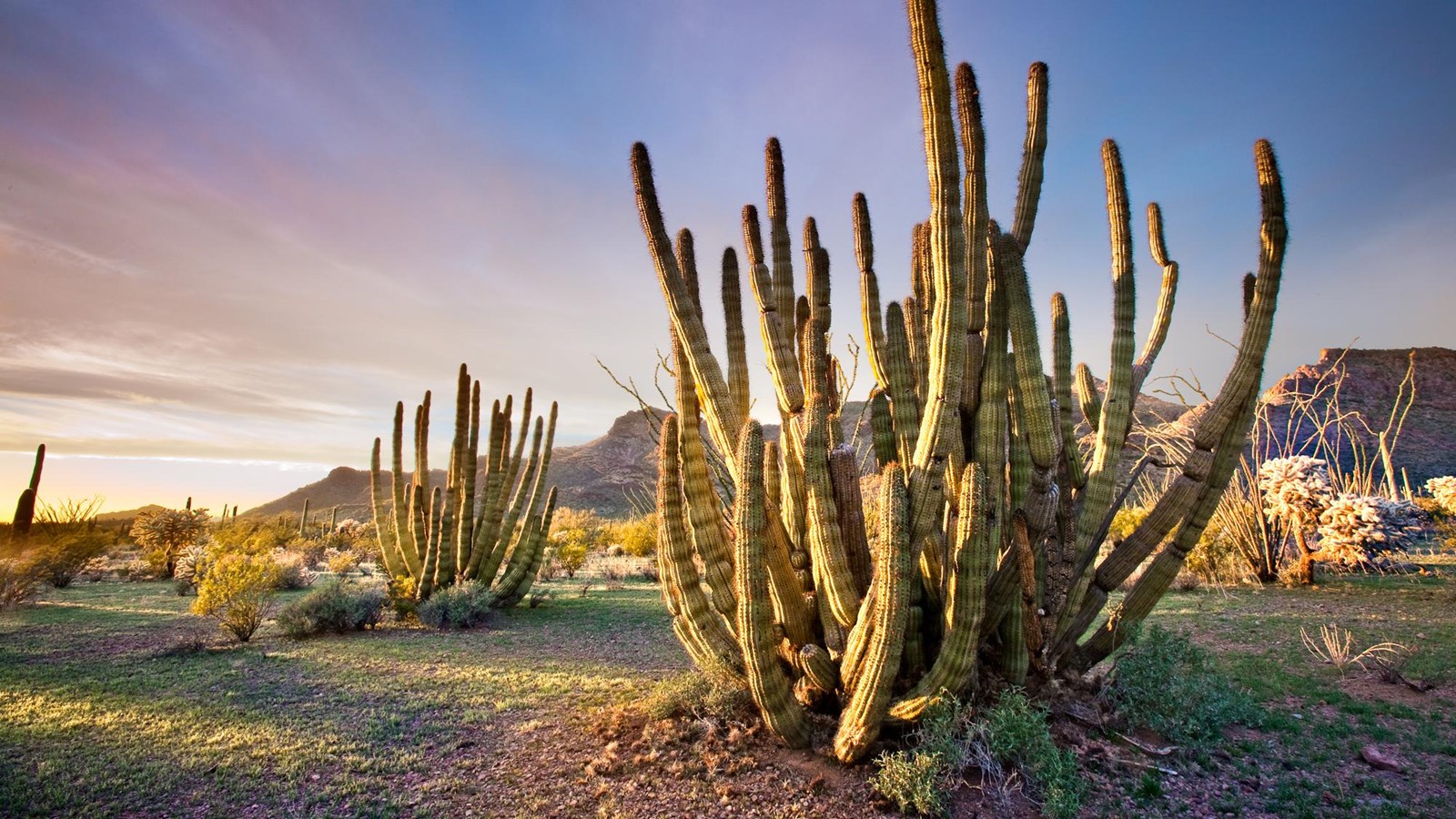Last updated: June 4, 2021
Place
Ajo Mountain Drive Stop 4

NPS Photo/ Craig Stocks
Quick Facts
Location:
Mile 3.9 [km 6.3] along Ajo Mountain Drive
Stop 4
Our Namesake Cactus
Organ Pipe Cactus National Monument was established in 1937 by President Franklin D. Roosevelt and protects most of the natural habitat of the organ pipe cactus within the United States. While commonly found in the southern sections of the Sonoran Desert, these cacti are rare north of the US-Mexico border but have adapted to life in the monument. Organ Pipe Cactus National Monument experiences only a few frosty nights a year, allowing the cacti to stay warm and flourish like their Mexican neighbors. Notice how these plants to your left are standing on the south-facing slopes with little vegetation near them. Organ pipe cacti crave the sun’s heat and do not require nurse plants. At night the rocks surrounding the plant release heat stored during the day, thus keeping the plants from freezing.
In June and July, flowers and fruits cover the arms of these columnar cacti. The flowers only open at night, closing for good in the early morning light to keep water loss at a minimum. These lavender-tinged white flowers emit a strong fragrance to attract lesser long-nosed bats. Each summer these bats migrate from Mexico to feast on flower nectar and the pregnant females give birth and nurse their young. They congregate at Organ Pipe Cactus National Monument, roosting within the monument’s caves, buildings and historical structures, such as abandoned mines, rock shelters and old ranch houses. As summer progresses, the mothers and their babies gorge themselves on cactus fruits and distribute the seeds across the desert helping to ensure the survival of the organ pipe cactus.
